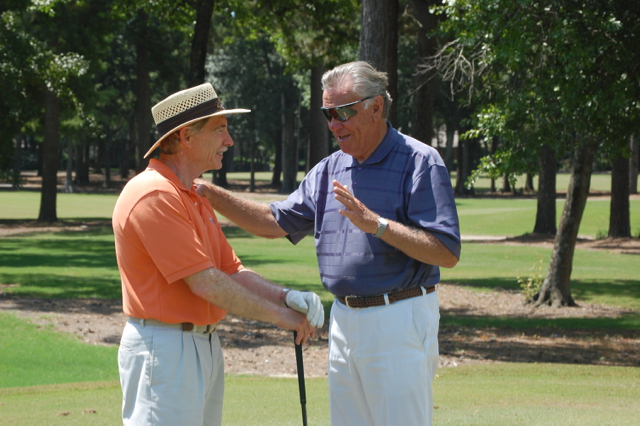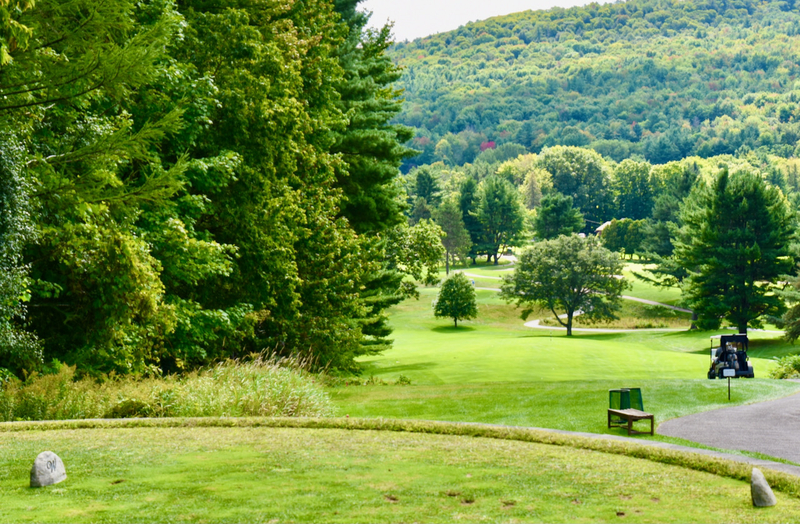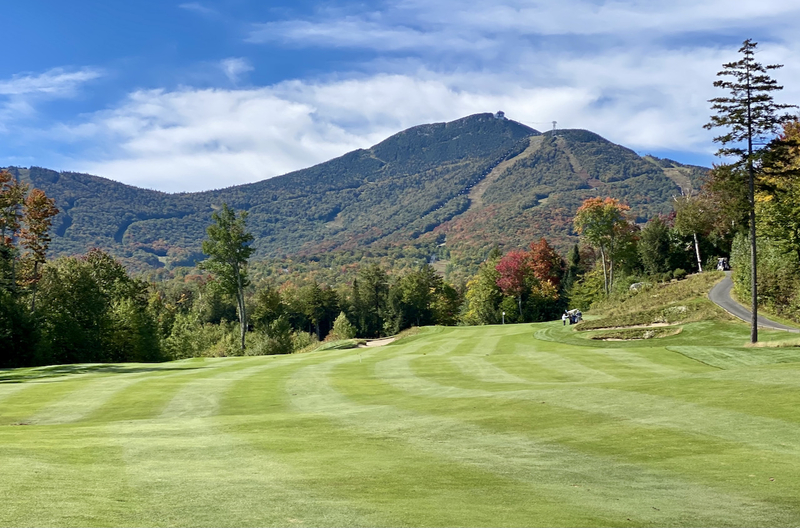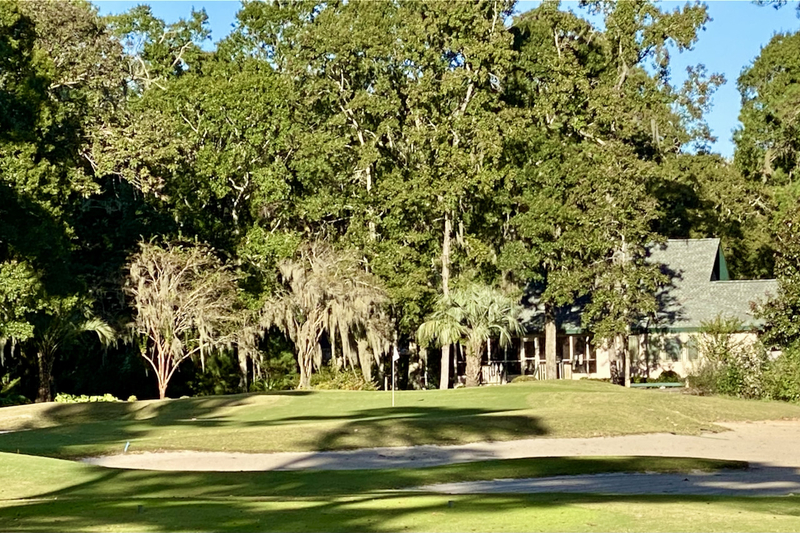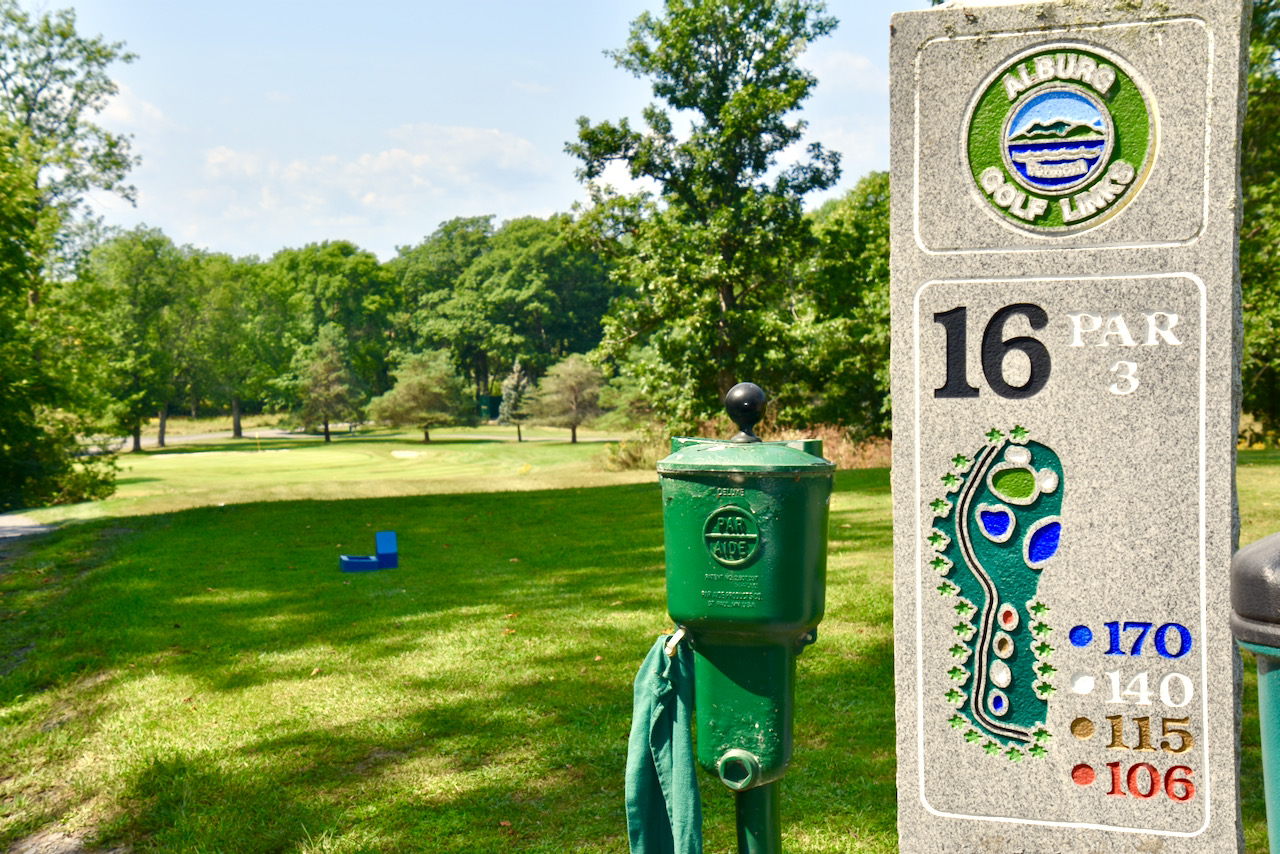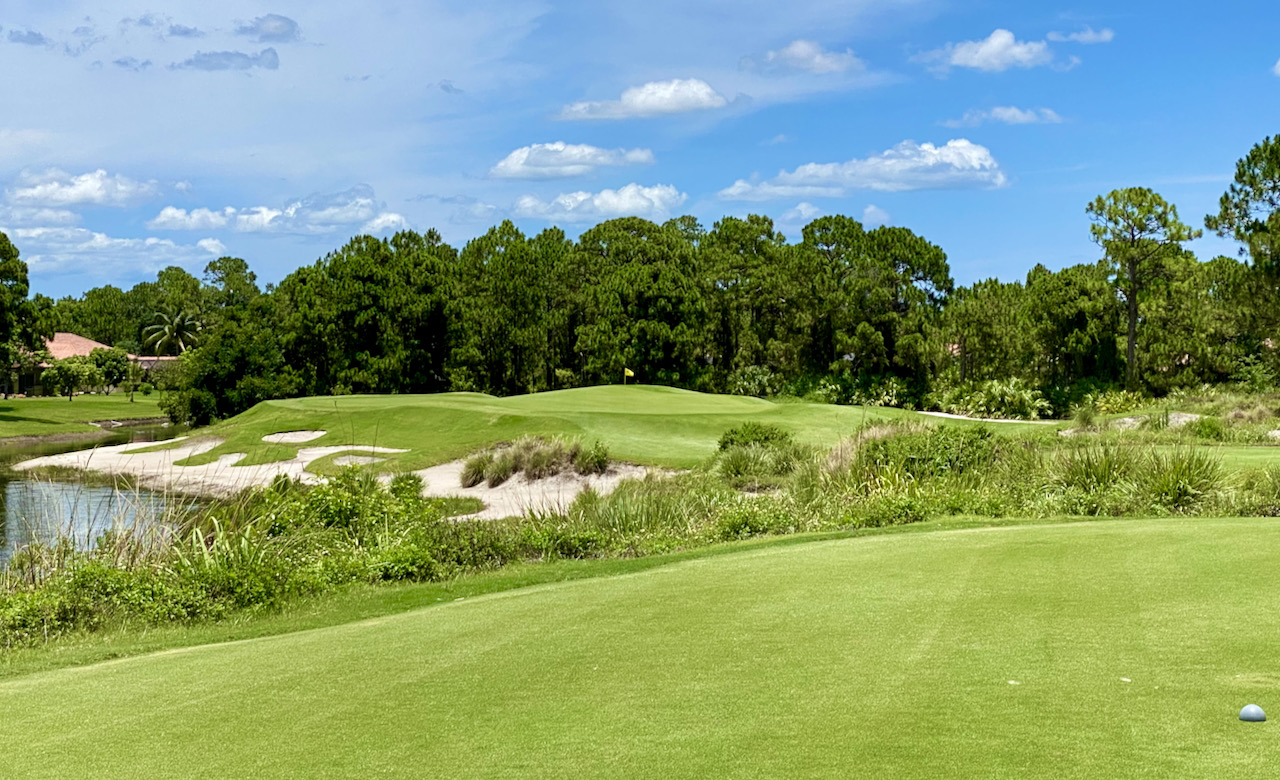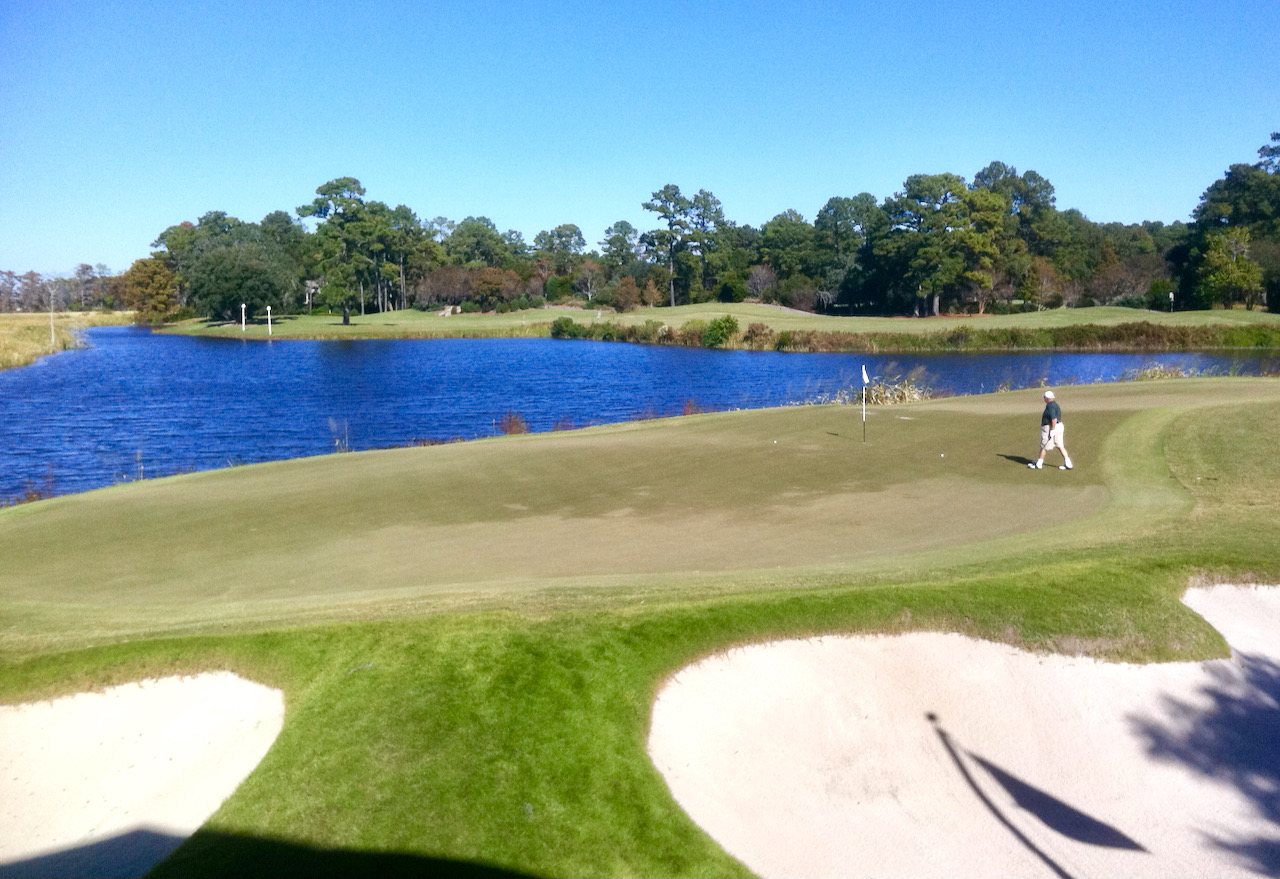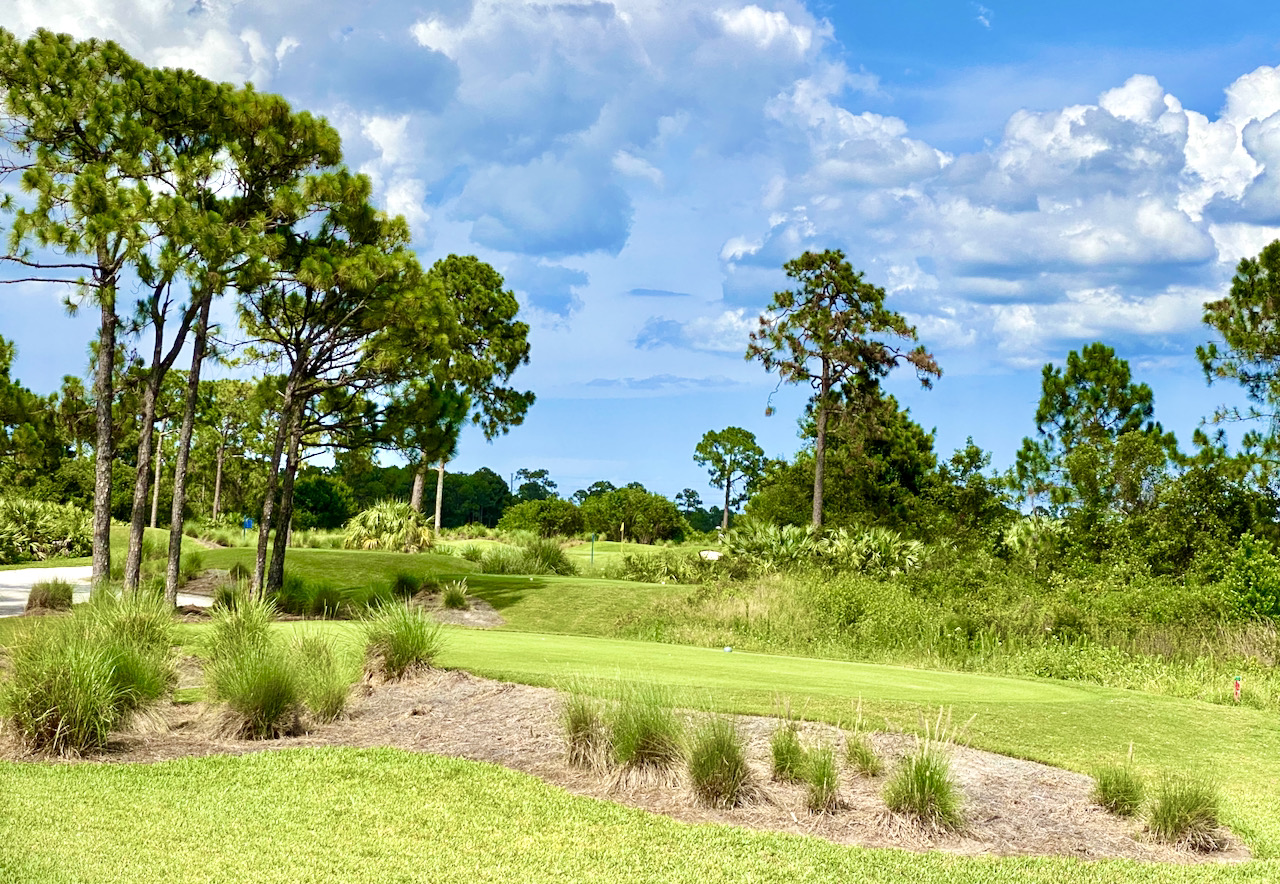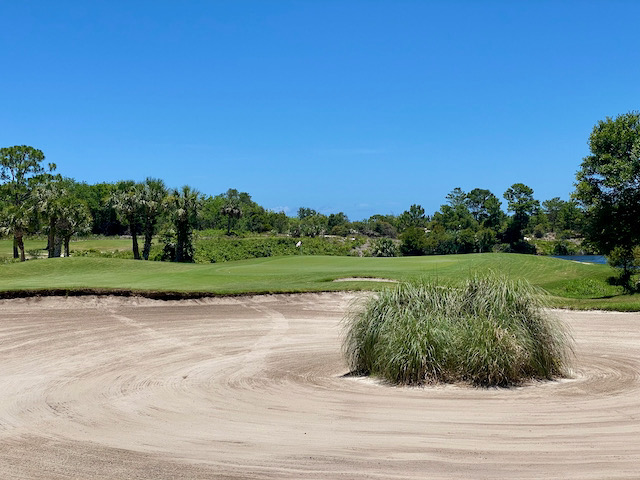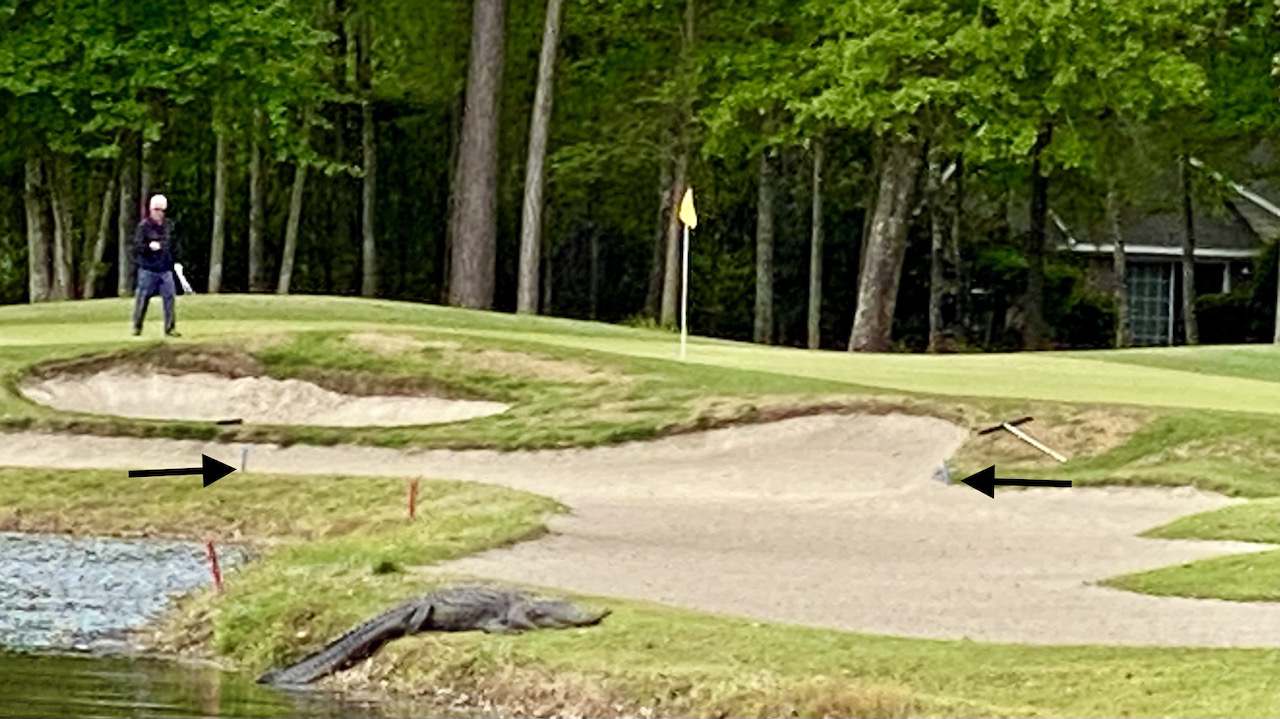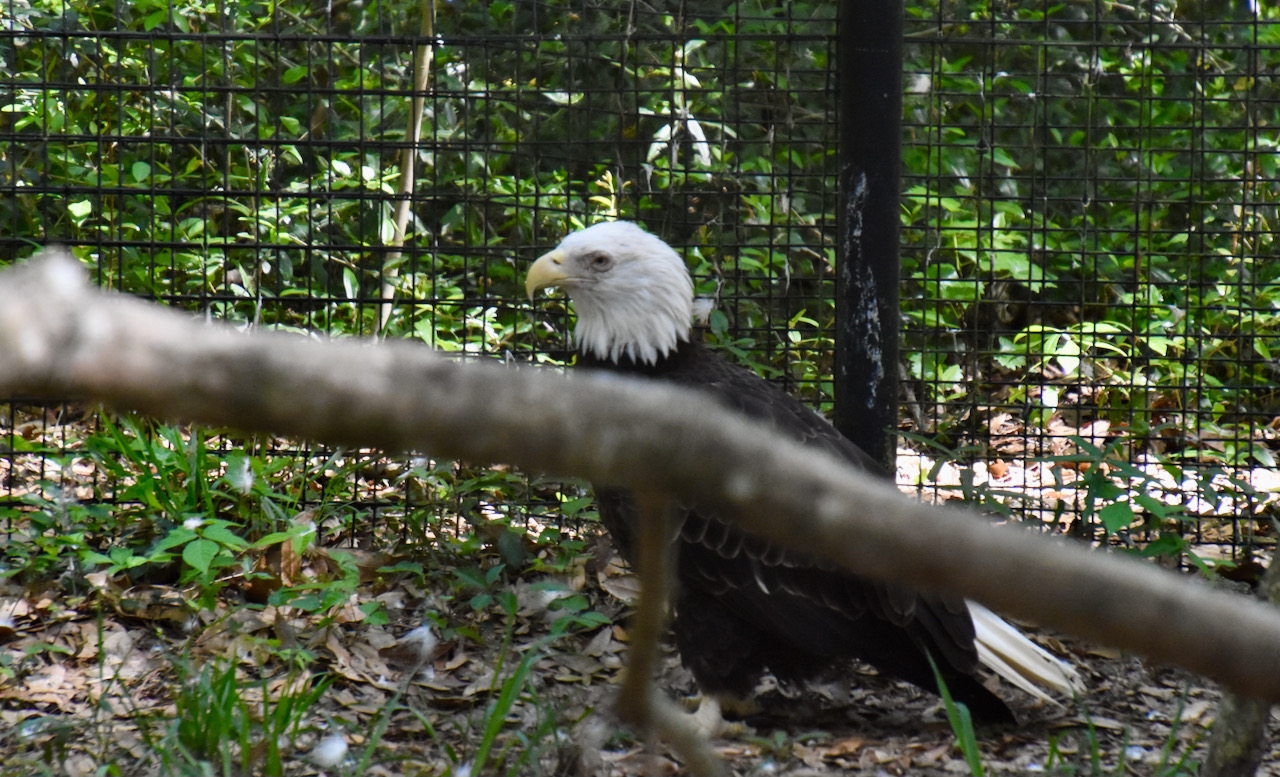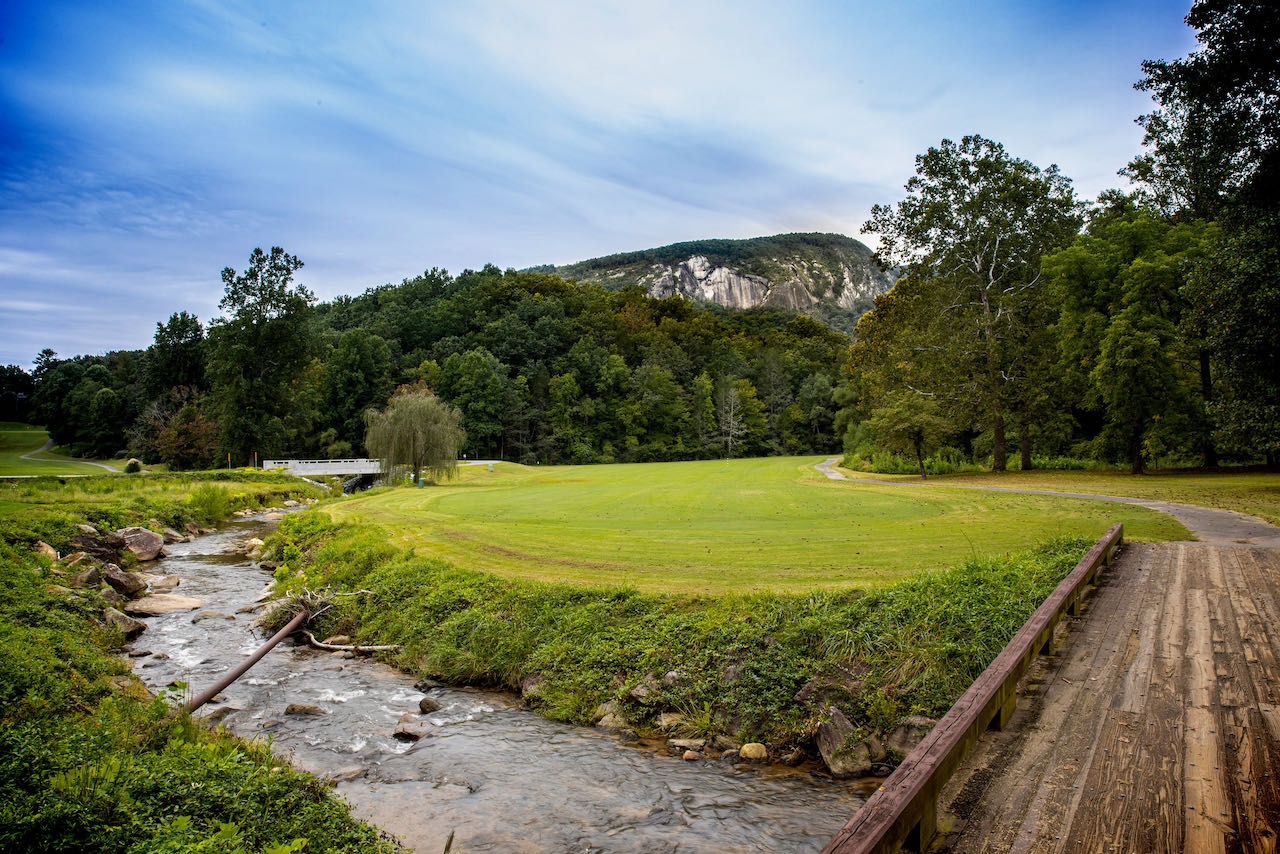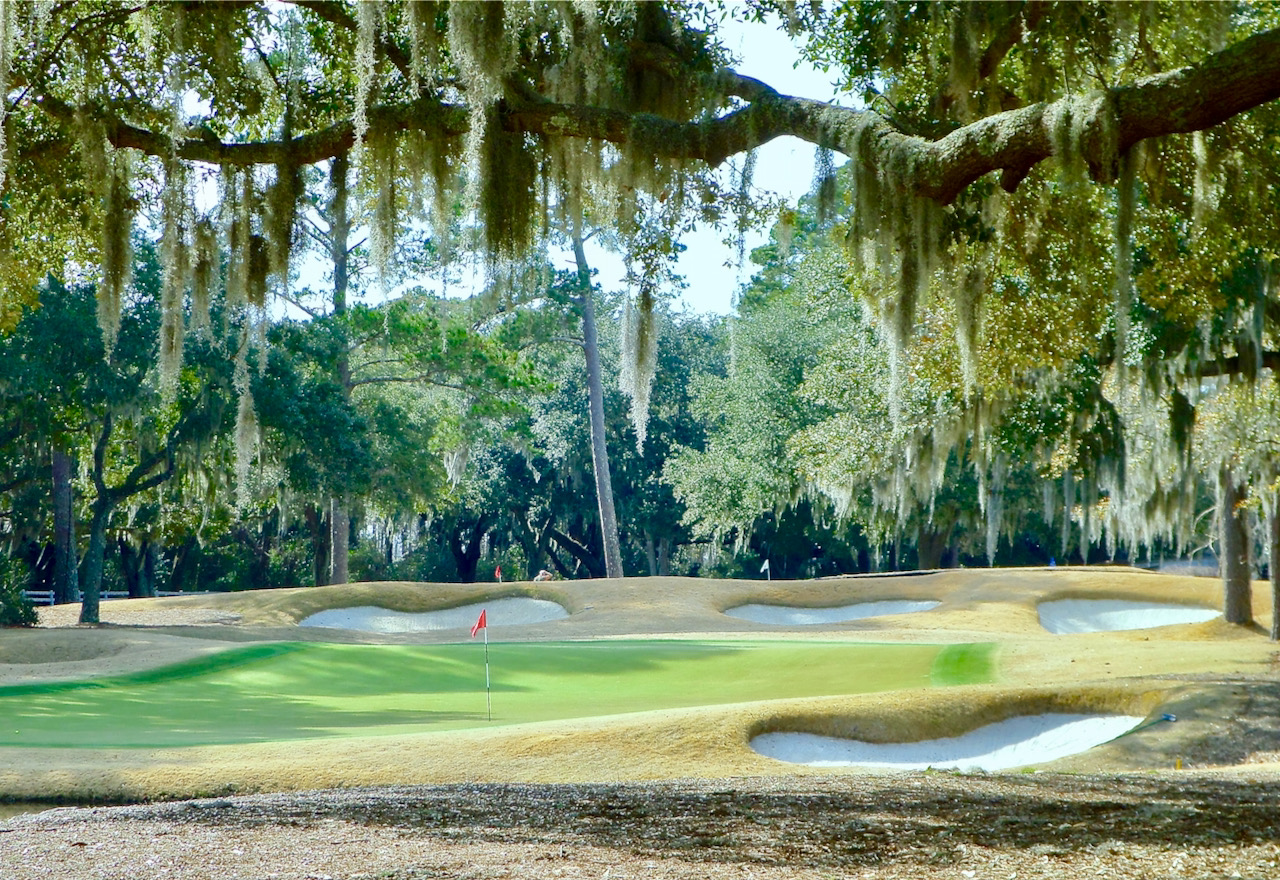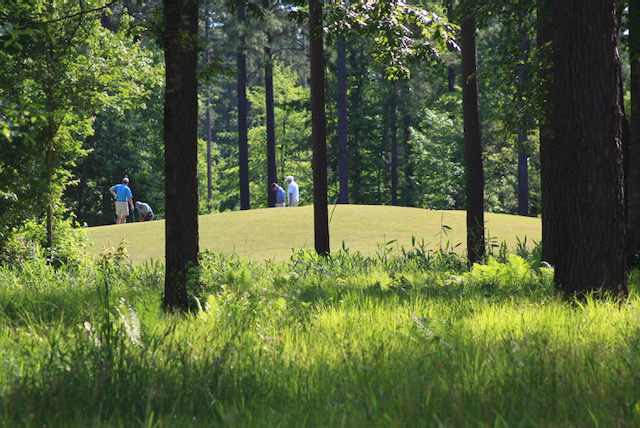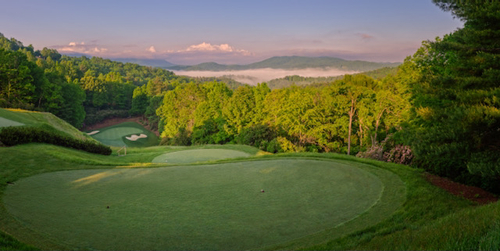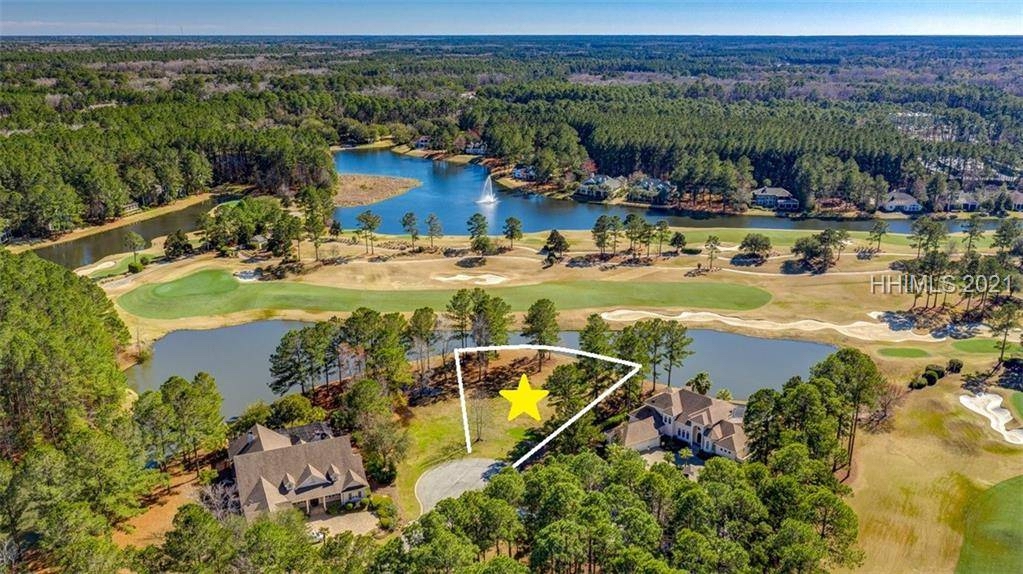This is the second part of an article on three days of lessons at golf school.
After the first day of the three-morning, 10 1/2 hour class, the other two students and I worked on pitching, chipping and putting. Many of Mel Sole’s lessons are available at his web site, http://www.ritson-sole.com/golf-tips/; I won’t repeat them here. I found that the most profound learning of the three days, all of it good, was the revelation about my full swing and, specifically, Mel’s guidance about the sliding of the hip. One easy lesson – you can attempt this at home – is to face sideways to a wall and, with the outside of your foot against the base of the wall, make a backswing with an imaginary club and then move your hips forward into the wall to start your downswing. (Of course, you are not going to follow through and bang your arms against the wall.) Once you hit the wall, so to speak, turn your hips so that you finish facing your imaginary target. It’s a simple exercise but reinforces the action of the hips.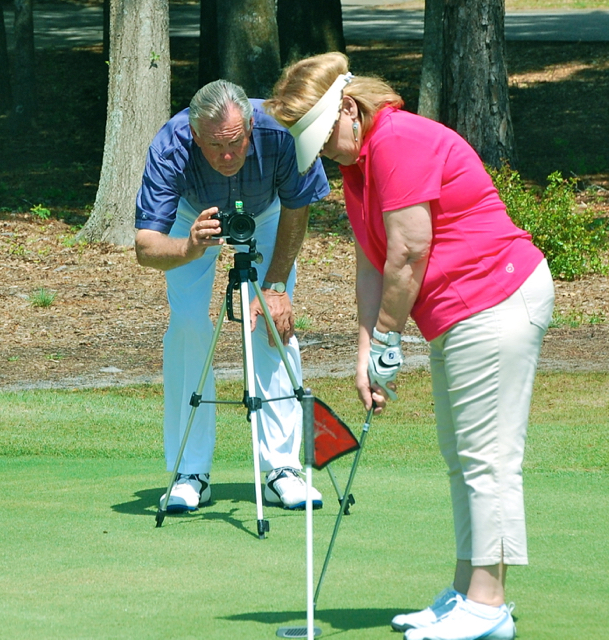 Mel Sole can work effectively with beginners and single-digit handicap players alike since class size is four maximum.
Mel Sole can work effectively with beginners and single-digit handicap players alike since class size is four maximum.
Seeing your swing on videotape, with Mel drawing computer-generated lines to show certain angles and comparing progress from Day One to Day Two, is a much more effective way of learning than just by verbal instructions. But a few days with Mel provides a few words-only stories – some instructive, some just entertaining – that are worth the reasonable price of admission. My favorite was about the time Mel was asked to tote the golf bag for Lee Trevino during a couple of exhibition matches with Gary Player in South Africa. Mel recalls during the first day of play that Trevino, being Trevino, hardly stopped talking. At the end of the round, Player, whom Mel revered then and now, asked Mel if he could get Trevino to quiet down on the second day of play. Mel told him he didn’t think he could. The next morning, on the first tee, Player walked up to Trevino and said, succinctly, “Lee, I do not like talking on the golf course.” To which the indefatigable Merry Mex said, “That’s okay, Gary. You can just listen.”
One of the reasons Mel dedicates an entire morning to chipping and putting is somewhat personal and the source of another story about the fundamental importance of mastering the game around and on the green. He recounts for his students the history of his career on the South African PGA Tour where he was typically in the top three players in driving accuracy and greens in regulation. “But I was an awful putter,” he adds, “and ranked 143rd. My putter kept me from winning tournaments and making a good living on the tour.” He was matched one day with the late Harold Henning, whom golfers of a certain age will remember as a fine player. After watching Mel’s putting woes for 18 holes, Henning put his arm around his fellow competitor and said, “Mel, you need to quit the tour before you put a gun to your head.” It wasn’t long after that Mel indeed quit the tour, became a teaching professional, moved to Canada to set up a school, met his future wife Rosemary and later moved to the Myrtle Beach area in the late 1980s. He and Rosemary have been running the school at Pawleys Plantation since 1991 where he has taught emerging golf professionals, CEOs of major companies and celebrities, such as the late college basketball coach Jim Valvano, of whom Rosemary Sole says, “He was great fun.” Valvano attended the school with longtime ESPN broadcaster John Saunders. Mel has also worked with former National Hockey League players like Dennis Hull, Major League Baseball players Bill Landrum and Denny Nagle, and Billiards Hall of Famer Ewa Mataya Laurance.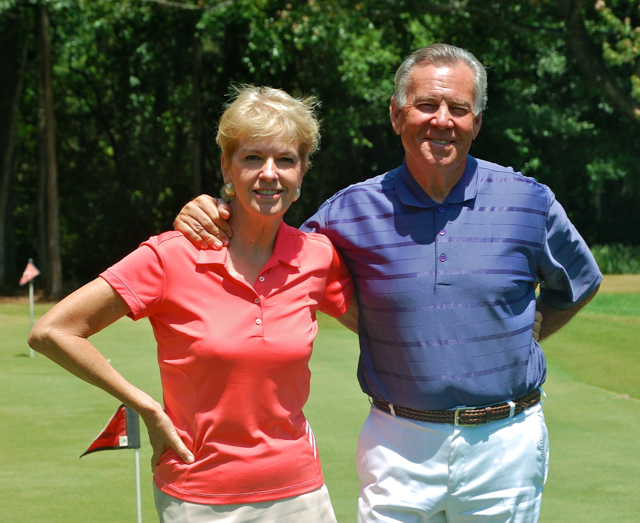 Mel and Rosemary Sole have run the golf school at Pawleys Plantation in Pawleys Island, SC, since 1991.
Mel and Rosemary Sole have run the golf school at Pawleys Plantation in Pawleys Island, SC, since 1991.
Olympic fencing gold medalist (1996) Arndt Schmidt had heard about Mel’s school, and immediately after he earned gold at the Atlanta Olympics, he and his girlfriend rented a car and drove toward Pawleys Island. They overshot the mark by a couple hundred miles, made a U-turn near Charlotte, and took Mel’s first day’s class on no sleep.
In the three months since my three-day session with Mel, I haven’t practiced as much as I should, but I have played about a dozen rounds, and as I focus on that hip slide and the swing plane of the club, I am getting about 10 to 15 more yards off the tee and 5 to 7 yards off my medium to short irons. My average scores have dropped two to three strokes. And even though I can’t putt worth a darn lately, I am nowhere near putting a gun to my head because of it.
Not yet at least.
*
The Mel Sole Golf School is located inside the gates of the Pawleys Plantation golf community in Pawleys Island, SC. Phone: 843-237-4993; 800-624-4653. Email:




